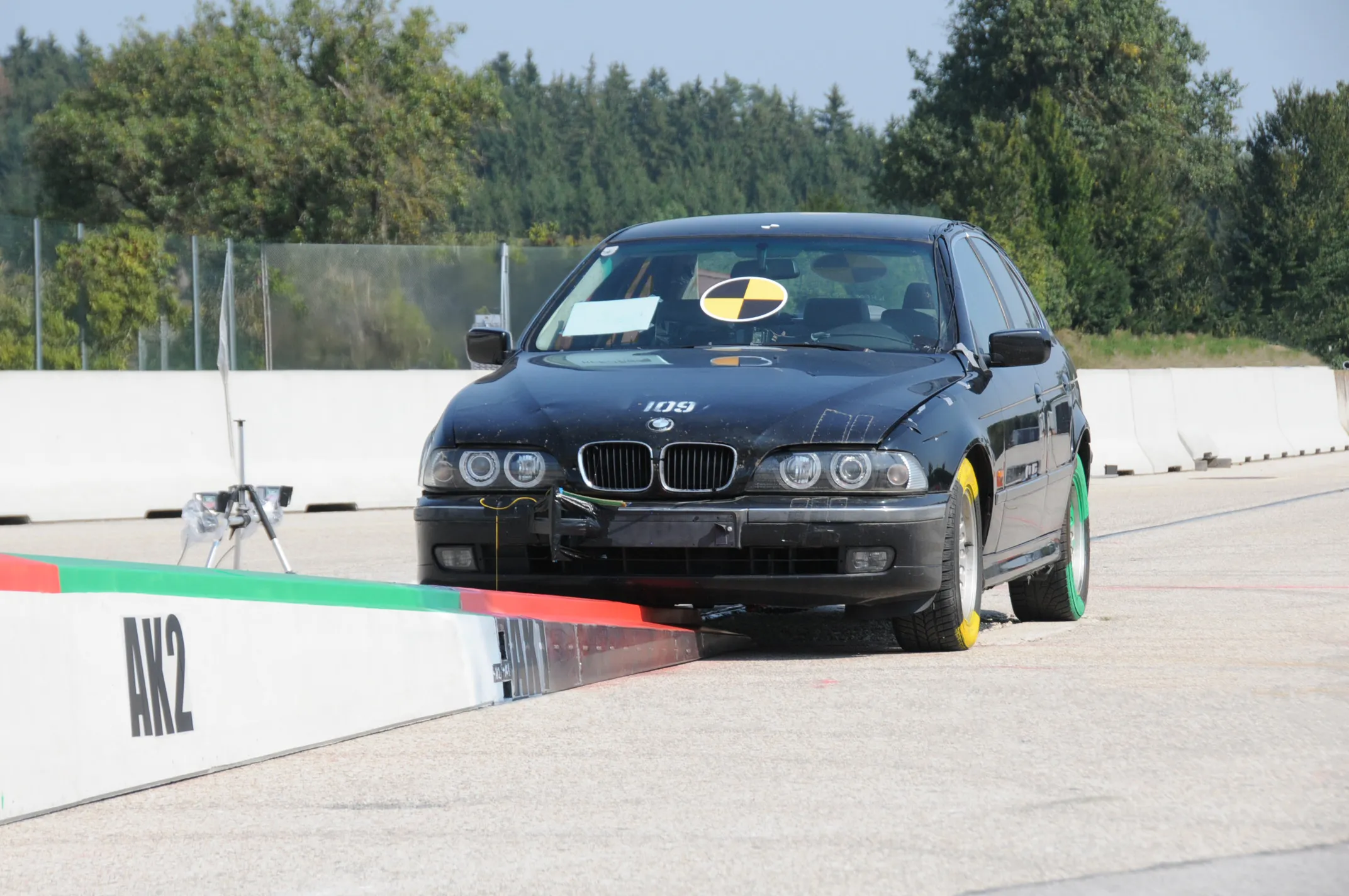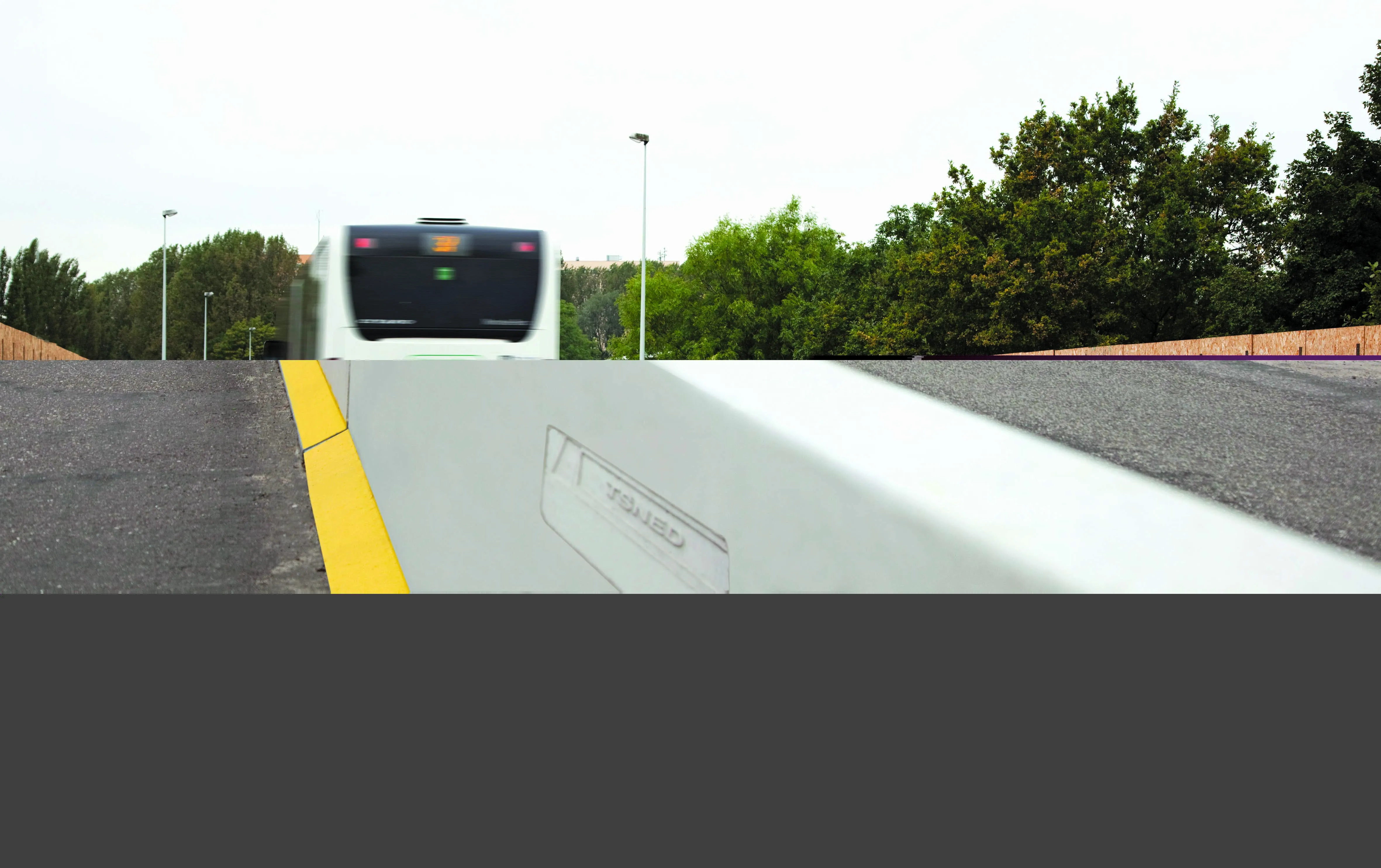
With the introduction of the new Technical Specification CEN/TS 1317-7:2023, introduced by the European Committee for Standardisation (CEN) in 2023, advancement has been made in road safety standards. Replacing the former Pre-Standard ENV 1317-4:2001, it provides a clear and binding framework for the performance characterisation and test methods of terminals (TE) for safety barriers.
The former scope has now been split into two documents:
• CEN/TS 1317-7:2023 – performance characterisation and test methods for terminals of safety barriers
• CEN/TR 1317-10:2023 – assessment methods and design guidelines for transitions, terminal and crash cushion connection - transitions
As a result of this division, CEN/TS 1317-7 now explicitly focuses on the terminals of safety barriers. This new focus enables a more detailed assessment and classification of the performance of terminals, providing a more precise evaluation framework.
A key element of the new document is the definition of test methods, which specify the testing procedures. The test code (for example, TT1.3.110) specifies key test parameters. ‘TT’ stands for Test of Terminal, ‘1’ represents the approach (1-6), ‘3’ indicates the test vehicle mass of 1,500kg (1 = 900kg, 2 = 1,300kg, 3 = 1,500kg). The final number represents the impact speed in km/h.
In the new specification, the former performance classes (for example, P4) are now classified as restraint categories (for example, T110/1). Meanwhile, the location (such as, A) has been replaced by a direction category (for example, BDT = bi-directional terminal).
The definition of lateral displacement has also been clarified, specifying the maximum displacement of the terminal during an impact, both on the traffic side (S) and the departure side (T) of the installation. Additionally, the categories of terminals Z1, Z2, Z3 and Z4 have been newly defined to ensure that the vehicle remains within the distances Za (approach side) and Zd (departure side) of the redirection zone dimensions.
To meet and even exceed these new standards, REBLOC has developed two innovative terminals. The REBLOC TE 80XA_17.9 is the first precast concrete terminal compliant with restraint category T110/1 (BDT), designed for safe redirection in both approach and departure scenarios. It can be installed on various surfaces and prevents rear-end collisions in confined traffic environments.
The REBLOC TE 80XA_4.1, developed for end-of-barrier applications (UTD = uni-directional terminal – departure), also meets T110/1 requirements. Compact and cost-effective, it’s ideal for space-limited installations while ensuring controlled vehicle redirection.
Beyond standard compliance, REBLOC tested its terminal under extreme real-world conditions: a frontal, head-centered impact at 130km/h – well above standard requirements. Despite the increased speed, the terminal met all key performance parameters, proving its reliability for high-speed road networks.
These forward-thinking systems comply with the highest technical standards. They also, importantly, significantly contribute to improved road safety by minimising impact severity and reducing the risk of secondary collisions.
Innovation means not just meeting standards, but setting new ones. REBLOC’s innovative terminals not only meet the requirements of the new Technical Specification but also actively contribute to enhancing road safety through advanced technologies. These new systems help reduce the risk of rear-end collisions, offering a sustainable solution for safer roadways.
Innovation means not just meeting standards – but setting new ones. REBLOC’s innovative terminals not only meet the requirements of the new Technical Specification but also actively contribute to enhancing road safety through advanced technologies. These new systems help reduce the risk of rear-end collisions, offering a sustainable solution for safer roadways.








